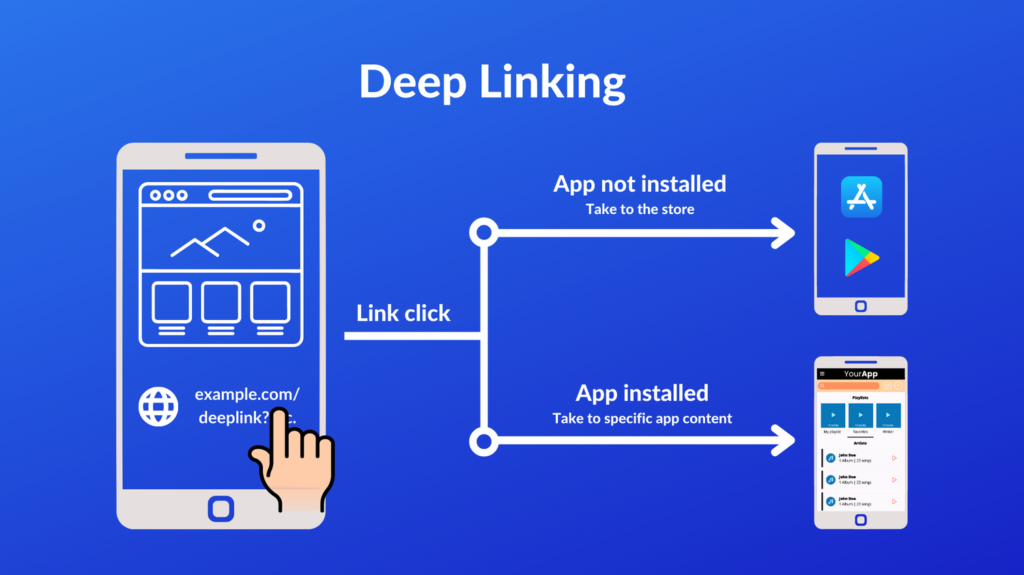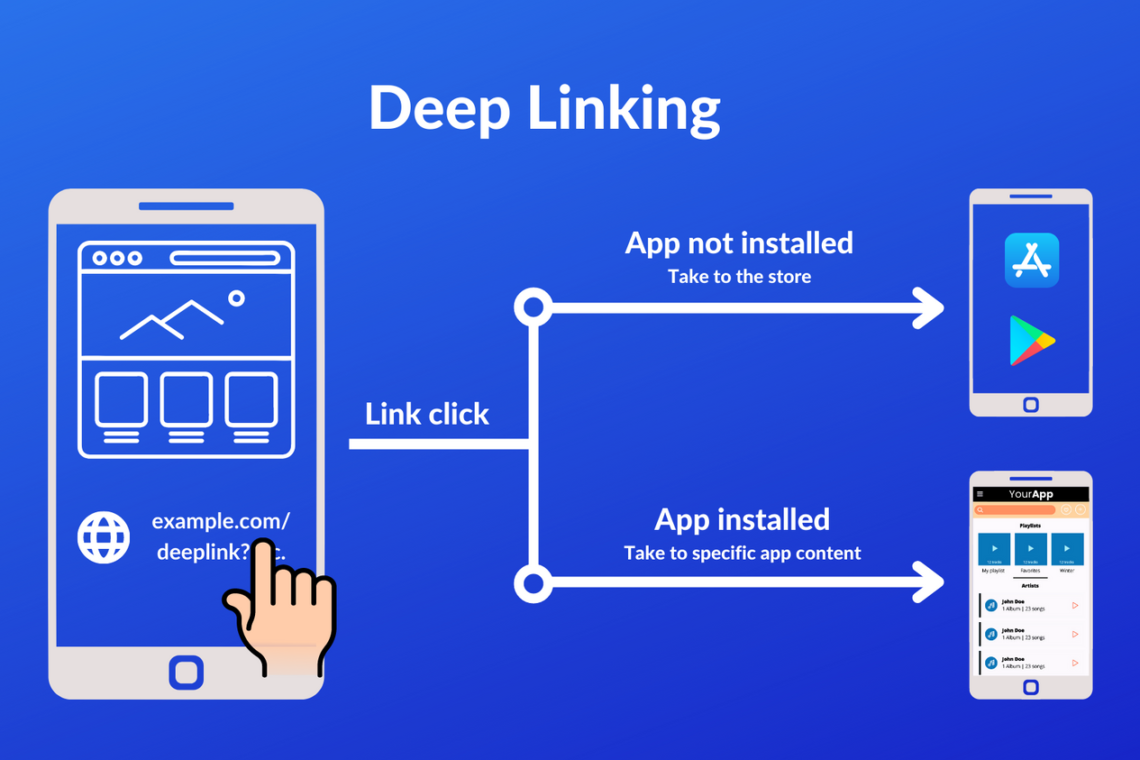
Deep linking is the practice of directing users to specific pages or content within a mobile app. It enables marketers to provide a seamless user experience by taking users directly to the relevant content instead of just opening up the app’s homepage . Here are some best practices for deep linking that can help marketing teams optimize their mobile campaigns.
- Use Unique URLs: Each deep link should have its unique URL which directs users to specific pages/content ensuring ease-of-use and reducing confusion among users
- Provide Clear Navigation : Ensure clear navigation paths so that when clicked, it takes user directly towards particular page without any additional clicks/redirects leading towards frictionless customer journey
- Implement App Indexing: Utilize Google App Indexing or Apple’s iOS Universal Links enabling search engines like Google/Bing/Siri etc., crawl indexable in-app content making them more discoverable
- Dynamic Deep Linking: Incorporate dynamic deep-linking generating personalized links based on individual preferences/search history , this way each user gets directed towards exactly what they’re looking for
- Test Often : Regularly test your deep-links across different devices/platforms/browser combinations ensuring functionality remains consistent as you make updates/modifications over time
- Measure Performance : Tracking metrics such as click-through-rate (CTR), bounce rate , conversion rates helps identify areas where improvements can be made while also providing insights into audience behavior patterns
- Promote Your Deep Links: Make sure your apps’ landing page prominently displays and promotes your deep links through social media channels/email marketing/campaign landing pages etc., attracting new customers whilst also retaining existing ones.
By following these best practices, marketers can create effective and efficient deeplinking campaigns resulting in smoother customer journeys thus increasing engagement levels with target audiences!
